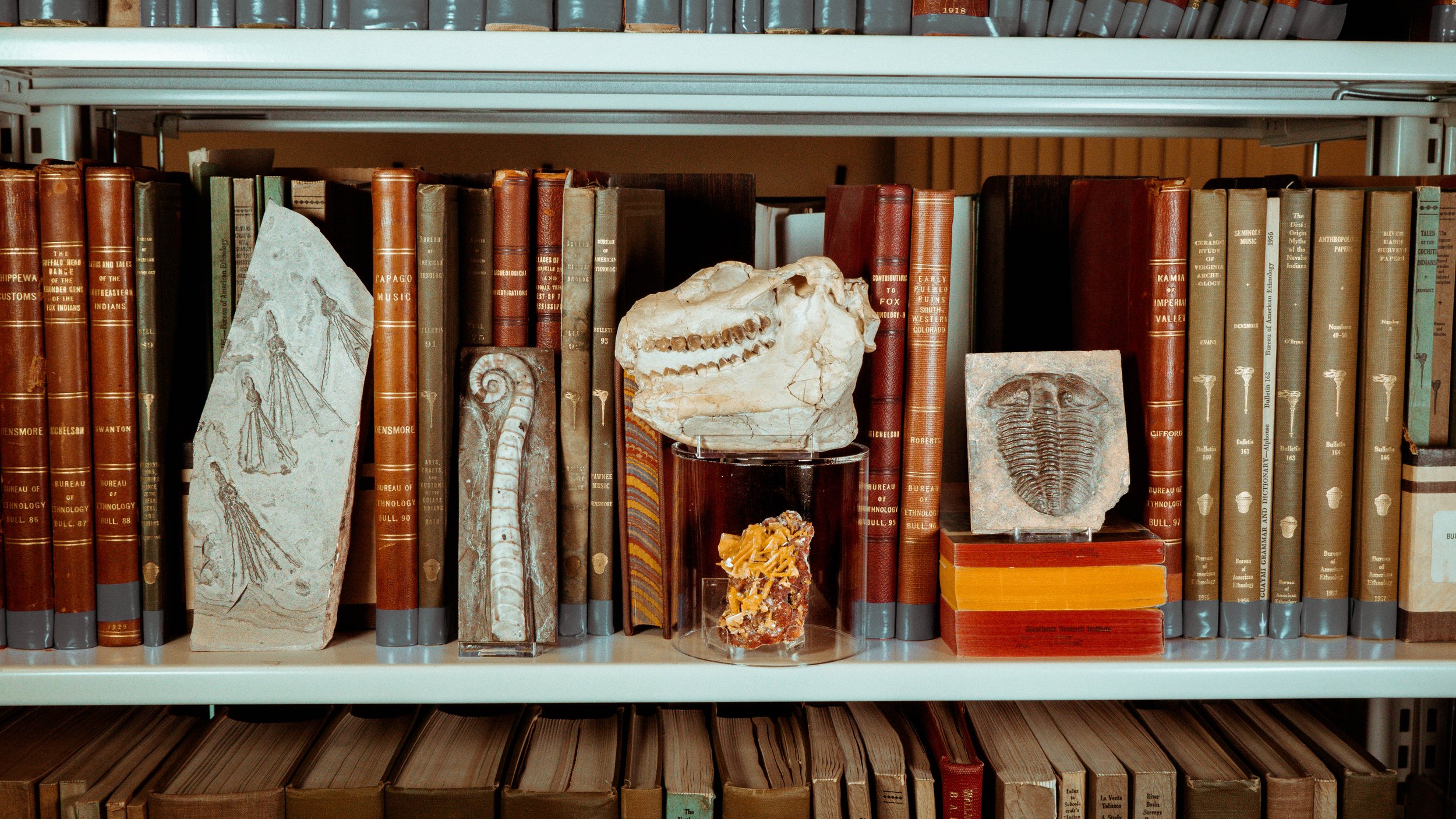
The GRI Collections

Welcome to the GRI Collections,
a representative sample of paleontological and geological specimens housed at the Geoscience Research Institute.
When the conditions are right, organisms’ remains or impressions can be preserved in rock. Rapid burial is often a factor. Much of what we know about the ecology of the ancient world can be ascertained by the study of fossils.
What are fossils?
The Ediacaran
The Ediacaran is the stratigraphic interval just below the Cambrian System. It is characterized by the occurrence of macroscopic fossils, some of which have been hypothesized to have metazoan affinity. Most Ediacaran organisms are so distinct in their body plans and functionality that they seem to be unrelated to typical Cambrian taxa in the layers above. The abrupt appearance and disappearance of Ediacaran assemblages is a distinctive feature of the fossil record.
Cambrian Explosion
Scientists have long been puzzled by the appearance of diverse phyla in Cambrian layers. If the geologic column can be read as a timeline, how did such great biological disparity appear so abruptly in the same stratigraphic interval?
Trilobite Diversity
These extinct marine arthropods are the most plentiful of all Cambrian fossils and are found on every continent. The abrupt appearance of trilobites in the fossil record illustrates an impressive example of diversity at the very base of the stratigraphic range of a group of organisms.
Ordovician Crinoids
Ordovician crinoids document the appearance of a new class of organisms with no underlying Cambrian fossil record. They are morphologically disparate from the start, with lack of ancestral intermediates. Ordovician crinoids also illustrate the significant increase in diversity of marine invertebrates observed in Ordovician strata.
Devonian Fish
Several major groups of fishes appear in Upper Silurian and Devonian rocks without a clear lineage of ancestral transitional forms. Significant disparity is observed between these species and those found in lower strata.
The Coconino Sandstone
Prior to the 1930s, scientists widely accepted the theory that footprints found in the Coconino Sandstone were made underwater. This theory was abandoned in favor of a dry desert interpretation that fit better with a gradualist paradigm. Learn more about some of the evidence relevant to this controversy.
Solnhofen Lagerstätte
The Jurassic Solnhofen Limestone is known for its exquisite fossils, which show exceptional preservation of soft and delicate parts. What conditions led to the accumulation of the limestone, the inclusion of dead organisms in its layers, and the remarkable quality of fossilization?
Green River Formation
The Green River Formation is an extensive Eocene sedimentary unit exposed in parts of Colorado, Wyoming, and Utah. Its sediments, laid down in a landlocked system of lakes, have produced hundreds of thousands of exceptionally preserved fossils, particularly fish. Discover more about the significance of these fossils and the rare conditions that enabled their remarkable preservation.
Minerals & Crystal Systems
Minerals are naturally occurring solids with a specific chemical composition and ordered internal structure, in contrast to rocks, which consist of variable mixtures of minerals. This collection is organized by crystal systems, seven structural types defined by the angles of crystal faces. Beyond their symmetry, color, and luster, minerals reveal how variation, order, and beauty are reflected in the fundamental fabric of nature.














